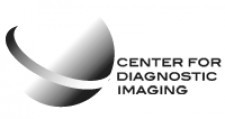3-D Mammography Improves Cancer Detection in Dense Breasts

MIAMI, February 27, 2018 (Newswire.com) - According to recent studies, The Center for Diagnostic Imaging announces that digital breast tomosynthesis, (known as 3-D mammography) has the potential to significantly increase the cancer detection rate in mammography screening of women with dense breasts.
Breasts are considered dense if they have a lot of fibrous or glandular tissue but not much fatty tissue. Research has shown that dense breasts are more likely to develop cancer, a problem compounded by the fact that cancer in dense breasts can be difficult to detect on mammograms.
The benefits of 3D mammography are far superior to standard mammograms. We can much more easily spot cancerous tissue with the advent of these technologies.
Dr. Eric, Godreau
Other imaging modalities like ultrasound and MRI are often used to help find cancers that can’t be seen on mammograms, but both modalities have higher rates of false-positive findings, which are suspicious findings that turn out not to be cancer. This higher false-positive rate often results in more tests and unnecessary biopsies, making MRI and ultrasound expensive to implement in high-volume screening programs, according to Per Skaane, M.D., lead doctor of the study.
Dr. Skaane and colleagues have been studying tomosynthesis as a promising breast cancer screening option that addresses some of the limitations of mammography by providing 3-D views of the breast.
“Tomosynthesis could be regarded as an improvement of mammography and would be much easier than MRI or ultrasound to implement in organized screening programs,” Dr. Skaane said. “So the intention of our study was to see if tomosynthesis really would significantly increase the cancer detection rate in a population-based mammography screening program.”
“The benefits of 3D mammography are far superior to standard mammograms. We can much more easily spot cancerous tissue with the advent of these technologies,” Dr. Eric Godreau of CDI remarked.
A conventional mammogram creates a two-dimensional image of the breast from two X-ray images of each breast. Three-dimensional mammography is approved by the U.S. FDA but isn’t yet considered the standard of care for breast cancer screening. Because it’s still relatively new, not all hospitals and mammogram facilities have it.
Source: The Center for Diagnostic Imaging